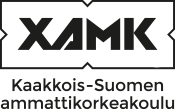Dangerous Cargo Transportation (5 cr)
Code: LO00CP88-3004
General information
Enrollment
12.04.2021 - 25.04.2021
Timing
30.08.2021 - 17.12.2021
Number of ECTS credits allocated
5 op
Mode of delivery
Contact teaching
Unit
Department of Logistics and Marine Technology
Campus
Kotka Campus
Teaching languages
- Finnish
Degree programmes
- Degree Programme in Logistics
Teachers
- Antti Lanki
- Jouni Ropponen
Teacher in charge
Jouni Ropponen
Groups
-
LOKT19SPLogistics, full-time studies
Objective
You know the basic information about legislation and instructions from officials related to the transportation of dangerous goods, and issues related to classification, packaging, handling and transporting of dangerous goods by road.
You recognize dangerous cargo transportation as a part of supply chain management.
Content
What are dangerous goods and how are they classified?
How are the obligations and responsibilities of different parties distributed in the transport of dangerous goods?
Road Transportation ADR:
• What does limited transport amounts mean and what does it mean that certain goods cannot be loaded together? Vapaaraja uupuu
• What are requirements do the packaging used for the transportation of dangerous goods?
• How are the vehicles used in the transportation of dangerous goods marked and what kind of permit requirements do the drivers have?
• What are the documents and safety equipment needed for the transportation of dangerous goods like?
• What kind of instructions are related to the loading, transporting and dissembling of dangerous goods?
• What are the driving bans and restrictions related to the transportation of dangerous goods by road?
Sea Transportation IMDG:
• What is IMDG-code and how it can be used?
• How do you separate cargoes under IMDG-code in diffirent shiptypes and ports?
• How do you find needed information from the IMDG-code?
• Your duties and responsibilities when you are acting as transporter or sender of cargo?
Materials
Will be informed later by the teacher
Teaching methods
Scheduled track:
The student proceeds according to the time schedule.
Independent track:
No possibilty for integration
Blended track:
The student can take the course together with an older student group.
Employer connections
No practical training included
Exam schedules
Re-exam can be taken in re-exam days that the teacher defines
International connections
The course is common with Logistics Engineering and Business Logistics exchange students and double degree programmes.
Student workload
The student´s work load is approximately 135 h.
Evaluation scale
1-5
Assessment methods and criteria
The assessment is based on exam and/or assignments
Qualifications
Transportation logistics
